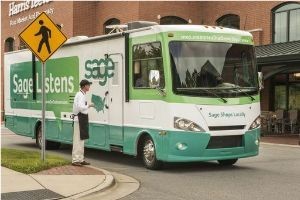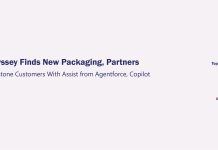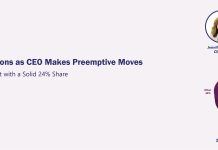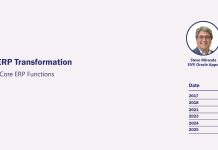After years of expanding via acquisitions and strategy shifts, Sage appears to have finally found the right engine to power its growth.
Sage, the world’s fourth-largest ERP applications vendor, has embarked on a new journey to get closer to its customers as part of an image-remaking campaign to build a global brand and drive greater inroads into its core markets from financial management to integrated payments.
Nowhere was the quest more evident than at last week’s Sage Summit 2013, its North America annual conference for thousands of customers and partners. There were a number of announcements including its push into the hybrid Cloud with the help of Microsoft Azure as well as enhanced features for mobile extensions and connected services. Held in Washington DC, the event also showcased a RV that was in the midst of a 6,000-mile coast-to-coast Sage Listens bus tour covering 17 US cities.
The idea is to visit a new city every few days with Sage executives in tow meeting up resellers and customers who have been notified in advance. During the tour, Sage would also talk up with media outlets discussing the impact of its products on local small and mid-sized companies, which remain the job creators and economic drivers for many communities. It’s not clear how Sage measures the success of such a cross-country campaign, but the undertaking is likely to generate more favorable customer goodwill than the all-too-familiar webinars and conference calls where human touch has largely been replaced by slide shares and drop calls due to bad connections.
Thusly the bus tour would be instrumental in helping Sage reconnect with its customers at a time when the vendor vows to triple brand investment in the coming year. Following its recent moves including the divestitures of a number of product brands, Sage is poised to take the driver’s seat once again.
Gone were the days when Sage was meandering like a ship without its rudder. Best Software, its earlier brand in the US, saw diminishing returns with a mixed bag of legacy and disparate applications from DacEasy to MAS 500 after it purchased assets including Accpac, Corum Mobile CRM, Interact, Peachtree, and State of the Art. After its failed attempts to become a credible player in areas like practice management systems for physicians with the acquisition of Emdeon Practices Services in 2006 or widen its lead among nonprofit organizations with its earlier purchase of MIP, Sage decided to play smarter in the markets that it knows best.
Though Sage has not abandoned sales of CRM applications, its February 2013 decision to spin off ACT and Saleslogix offerings suggested that ERP and connected services would be its tickets to SMB dominance. Around the world, Sage’s de-emphasis of CRM was also keenly felt. At a Sage Group plc analyst meeting in July, Sage CRM was only briefly mentioned on one slide with the bulk of the discussion devoted to ERP, Cloud delivery and connected services.
Another key difference between the old organization and the new Sage has to do with its streamlined approach. Whereas in the past product development responsibility was left to each division, the gating factor behind any major enhancement is now being determined at the corporate level allowing for greater economy of scale, according to Pascal Houillon, CEO of Sage North America, which accounts for nearly 30% of Sage Group plc’s revenues.
Houillon, a Frenchman and a 24-year company veteran who spent three months touring North America to get a first-hand knowledge of Sage’s business prior to taking over the CEO position in 2011, now realizes that the winning formula of any technology vendor is no different than that of French luxury brands coveted by consumers around the world because buyers are willing to pay more for the perceived brand value.
What that implies is that Sage’s future in North America and elsewhere lies in shoring up its brand value and multiply that quickly globally. For instance, Sage ERP X3, its ERP brand for the midmarket, has attracted over 4,000 customers worldwide. For the low-end, Sage One has signed up more than 11,500 paying customers, up from 6,190 last year. Then there are other long-standing ERP products like Sage 100, 200 and 300 that have also shown increased momentum having centralized their product development and marketing programs. Tying them all will be a growing portfolio of connected services such as Integrated Payments, which have 12,000 customers, up from 9,700 last year. The payments division now handles 15 billion transactions a year with Sage ERP customers accounting for about 30% of the volume.
Among the enhancements are Mobile Sales, Mobile Service and Mobile Billing and Payment all running on Microsoft Azure, a new Business Intelligence tool based on Tangerine Software for ERP X3, and the rollout of SageExchange.com portal that enables Sage Payment Solutions customers to view and manage all their credit card and ACH payment accounts.
Sage’s moves to reconnect with its customers came on the heels of its desire to remake its channel by tapping into accountants and expanding alliances with ISVs through the Sage Data Cloud, which serves as a central repository for connected services without requiring partners to create their own connectors.
In the past Sage might prefer its partners to take the heavy lifting. Today, by making it easier for Sage partners to expose its products to customers, the vendor aims to translate the simplicity on behalf of its end users who in turn will equate such ease of use and extensibility the intrinsic value of running Sage.
Sage’s new approach coincided with similar measures from its competitors notably Intuit’s recent decision to sell off its online banking division after years of expanding into different areas from real-estate to web hosting.
However, Sage’s takeover of the driver’s seat may face resistance among some of its key partners, especially those that feel the vendor’s more assertive role could compromise their margin opportunities. Their thinking is that the more value Sage provides the less room there is for them to add their value. Some even suggested that Sage would be better off reducing the number of lifestyle resellers that handle just a few deals in a given year and redirecting its resources to serving the interests of its biggest resellers in order to help them sell even more products.
During the conference Sage executives expressed little interest in segmenting its partners, let alone creating a class of master VARs that would cater to smaller partners even though its ecosystem has seen its share of consolidation.
The bottom line is that in order for Sage to sustain its newfound momentum(3% organic growth in first half of fiscal 2013) and to better serve its six million customers(including 3.2 million in North America), it needs to support every single partner that it can nurture. Sage may be back in the driver’s seat providing customers with products that are more attractive and valuable than ever, its future will still be determined by others sharing the ride.






